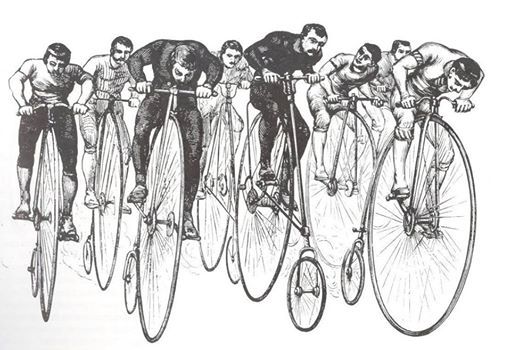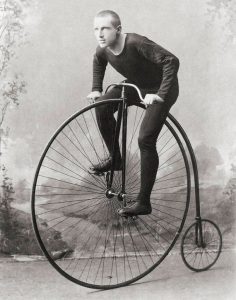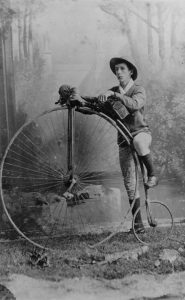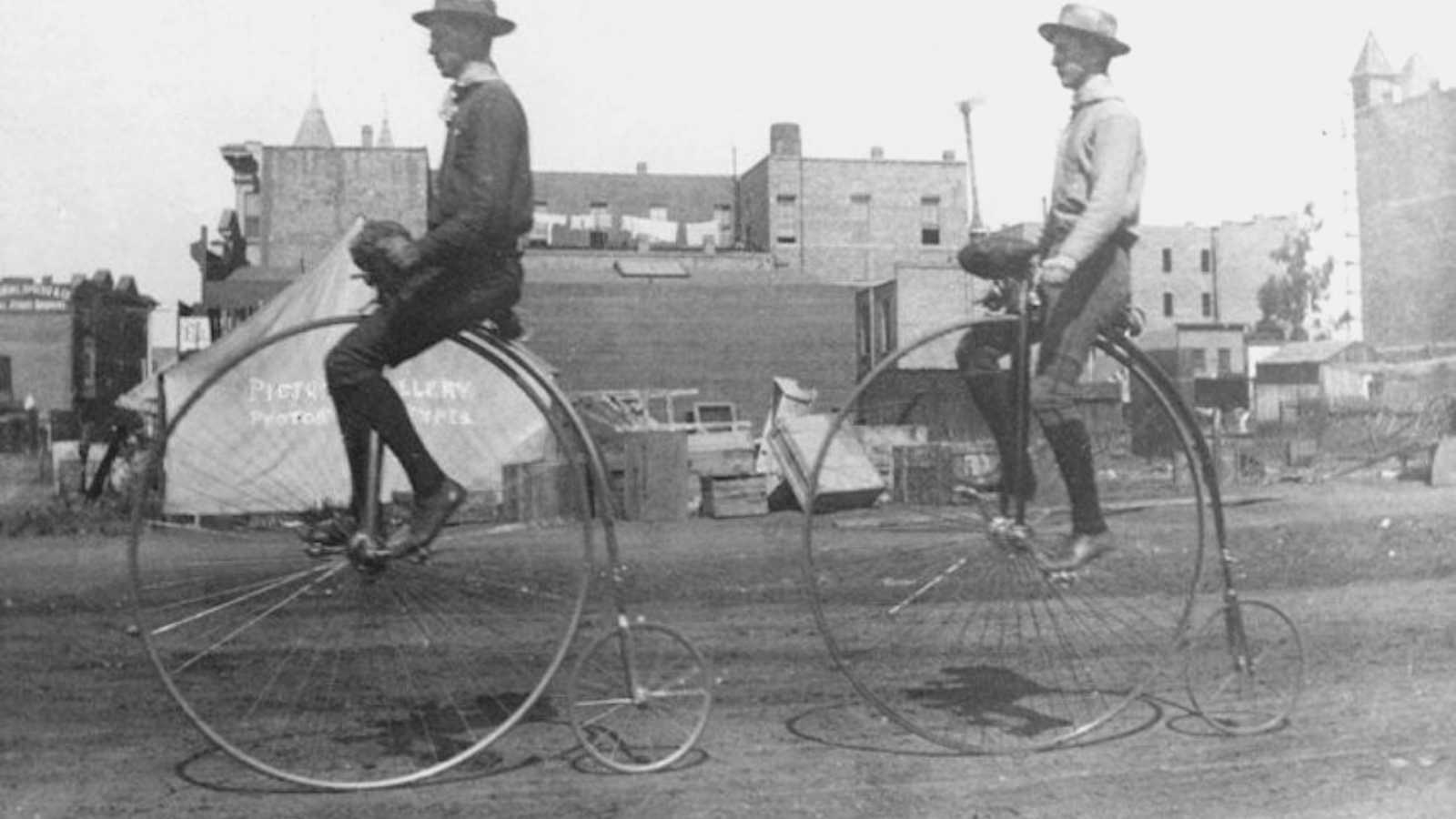The penny-farthing bicycle was the first vechicle called bicycle. With its large front wheel, it was popular in the 1870s and 1880s, before the modern bicycles became fashionable.

The name penny-farthing refers to the two types of English coins, because the vechicle looked like a big coin (penny) and a small coin (farthing) put together. Nevertheless, this nickname appeared in the newspapers only after the decline of the machine, while in its haydays it was called simply bicycle. (By the way, it’s also known as “high wheel” “high-wheeler” or “ordinary”)
Eugène Meyer of Paris, France is now regarded as the father of the high bicycle by the International Cycling History Conference in place of James Starley.

With its big first wheel, the penny-farthing was faster and in many ways more comfortable than its predecessor, the “boneshaker” (nomen est omen!). But it was also really unsafe, thus it was rather a thing for adventurous young man, than a new vechicle for the everyday life. No wonder, when the factories started producing the then-new chain driven, gear using bicycles with pneumatic tires (basically, the type of machine what we call bicycle) in the late 1880s, they marketed the product as a much safer alternative for the the penny-farthing.
 Nevertheless, during the peak of its popularity, some fascinating achivements were recorded. For example, the first hour record* was set in 1876, when Frank Dodds rode 24,5 km on his penny-farthing in Cambridge. William A Rowe own the best results of 33,5 km which he set in 1886. Another big achivement was Thomas Steven’s ride from San Francisco to Boston in 1884.
Nevertheless, during the peak of its popularity, some fascinating achivements were recorded. For example, the first hour record* was set in 1876, when Frank Dodds rode 24,5 km on his penny-farthing in Cambridge. William A Rowe own the best results of 33,5 km which he set in 1886. Another big achivement was Thomas Steven’s ride from San Francisco to Boston in 1884.
(*the first “hour record” in modern meaning, of course, was Henri Desgrange’s performance in 1893, but there were similar event in the earlier days with earlier types of bicycles)
Follow Peloton&Tales for more content from the early days (19th century) of road cycling.
